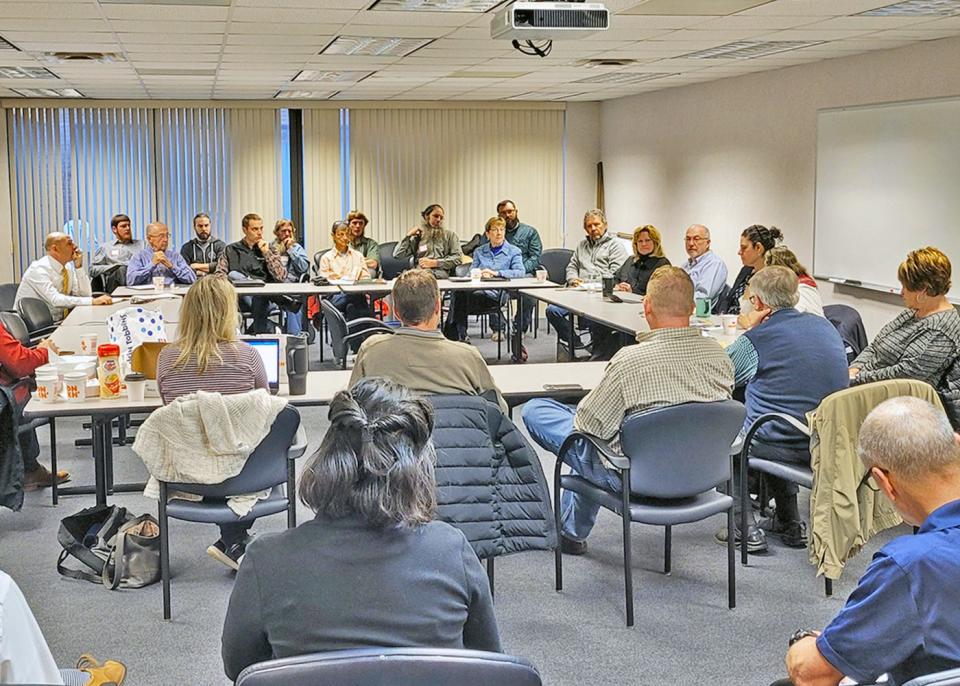Ag Success Team looks for path forward for farmers, farmland

WOOSTER − What began in 2004 with a group of farmers meeting each month to help grow the local farming community and strengthen Wayne County’s agricultural-related economy, the Agricultural Success Team has evolved into a group trying to save farmland.
The team will host an informational meeting 5-8 p.m. March 7 at the Buckeye Agricultural Museum and Education Center, 877 W. Old Lincoln Way, Wooster, to discuss issues that plague local farmers.
Anyone interested in helping shape the future of Wayne County’s economy and agricultural landscape can register to attend by contacting event coordinator Jessica Eikleberry at 330-347-7183 or by email at jessica.eikleberry@gmail.com by Feb. 20.
According to a study published in 2022 by the United States Department of Agriculture (USDA), the number of farms in 2021 was estimated at 2,012,050, down 6,950 from the previous year. Total 2021 farmland, 895,300,000 acres, decreased by 1.3 million acres from 2020.
More:Ohio farmers grapple with uncertain future, flimsy supply chain
“Agriculture accounts for 21 percent of our economy,” Commissioner Sue Smail said. “We were recently told by the American Farmland Trust that our farmland is 81% nationally significant. This means that we have some of the best farmland in the nation, and it is best suited for long-term production of crops.”
To stress the importance of the local agricultural economy, the American Farmland Trust (AFT) points to an Ohio State study that used the North American Industry Classification System (NAICS) to determine the percentage agriculture contributed to each sector and concluded Wayne County’s agricultural industry infuses roughly $1.2 billion into the local economy.
“That is a significant number,” Smail continued. “It is our responsibility to determine a path forward given these difficult circumstances.”
Landscape of modern agriculture is changing
The combination of fewer people aspiring to operate a farm and the value of farmland at a record high is putting the agricultural industry on edge.
“There is a huge financial incentive to sell land to developers,” Smail said. “We are starting to see some concern from active farmers about how it will impact the county’s future.”
As the population grows, food production will need to increase to meet the demand. But with less farmland and fewer farmers, there is a growing uneasiness about the future of agriculture in general.
Frank Becker of the Ohio State University Extension Office, Wayne County, has observed the writing on the wall.
Becker said it is challenging to ask a person who is being offered $3 or $4 million for their farm to keep living off of their Social Security check because their land is needed for agricultural use, especially if the family’s next generation isn’t interested in taking over the operation.
When farmland is gone, it's gone forever
“Once that farmland is gone, we won’t get it back; it is gone forever,” Becker said during a 2022 Ag Success meeting. “I don’t know how to drive that point home to people outside the agricultural community. They aren’t making new farmland.”
According to AFT statistics, between 2001 and 2016, 11 million acres of farmland were converted to urban use across the nation.
“When farmland becomes this expensive, it has a two-sided effect on agriculture,” AFT Senior Program Advisor Julia Freedgood said during the meeting. “It is tough to expand an existing farm, and it is tempting to sell because you can make so much money.”
Farmland acreage is shrinking, and nationally farms are losing topsoil at an alarming rate. The AFT’s mission is to protect farmland, promote sound farming practices, and keep farmers on the land.
“We don’t want to sound like alarmists,” Smail said. “But we must protect our local agricultural industry by discovering the issues farmers face and facilitate solutions to those issues.”
Dan Starcher is the public communications coordinator for the Wayne County commissioners.
This article originally appeared on The Daily Record: Wayne Ag Team looks for path forward for farmers, farmland
